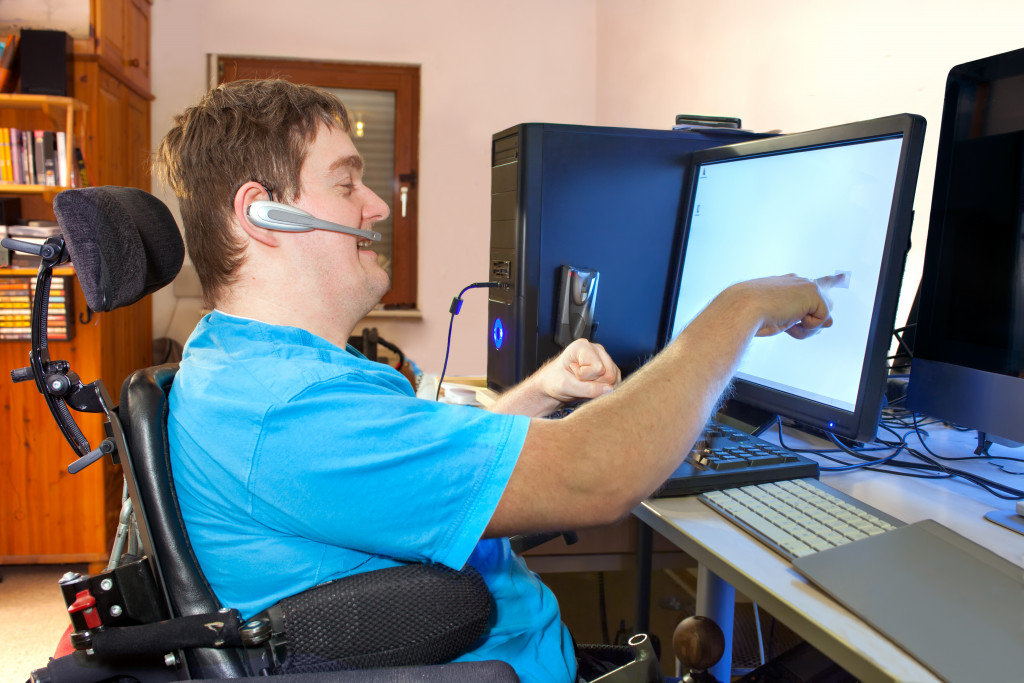- Science has provided new assistive technologies and devices, enabling people with disabilities to perform their jobs independently.
- Inclusive design principles allow for the development of ergonomic workstations, accessible building designs, and communication support in workplaces.
- Digital platforms offer accessibility features that cater to differently-abled employees, such as email, social media, and messenger apps.
- Innovative computer software translates spoken words into written words for individuals who rely on written communication due to hearing impairments.
- Technology offers mobility solutions such as smart wheelchairs and pain management technologies for individuals with disabilities.
Work is an essential part of life as it provides a means to sustain a living and be financially independent. However, for people with disabilities, it can be much more challenging to find jobs that suit their needs, let alone get the chance to perform them.
People with disabilities often face additional barriers that make finding employment or working in a suitable environment difficult. Empowering employees with disabilities is crucial as it allows them to showcase their skills, abilities and be self-reliant.
Moreover, including people with disabilities in the workforce has many benefits, such as increased diversity, improved employee morale, and innovation.
Science, digital, and technology have significantly improved the lives of people with disabilities. They have developed technologies and solutions that enable people with disabilities to work independently, efficiently, and with ease.
These technologies have proved that accessibility and inclusivity are not luxuries but are essential for workplaces across industries.
Leveraging Science for Empowerment
Science has allowed us to gain new insights into the challenges that people with disabilities face. It has provided us with the knowledge needed to invent new assistive technologies and devices that have transformed how people work.
Assistive Technologies and Devices
Individuals with disabilities have different needs, and technology has created solutions that cater to those needs effectively. For example, a simple device such as a prosthetic limb or a wheelchair can be life-changing for a person, enabling them to move around independently.
Other devices such as hearing aids, neuroprosthetics, smart glasses, and exoskeletons have allowed individuals to perform their jobs without barriers.
Advances in Accessibility and Inclusive Design
Designing workplaces inclusive of people with disabilities has been made easier with advances in accessibility and inclusive design. Inclusive design principles consider the diverse needs and abilities of individuals.
It has led to the development of ergonomic workstations, accessible building designs, and enhanced communication support in the workplace environment.
Adaptive Software and Hardware Solutions
Adaptive software and hardware solutions are designed to assist employees with disabilities with their specific needs. This software adjusts the presentation and interaction of software to accommodate different learning and cognitive needs. This has enabled people with hearing impairments to participate in virtual meetings easily.
Harnessing the Power of Digital Tools
There has been a growing trend towards inclusivity in the workplace, with more and more people with disabilities being given work opportunities and support to maximize their potential. Here are some digital tools you can integrate into your business to empower your employees.
Digital Platforms for Communication and Collaboration
One of the significant issues that employees with disabilities face in the workplace is communication and collaboration. Thanks to digital platforms such as email, social media, and messenger apps, communication, and cooperation have become much more accessible.
These digital platforms offer various types of accessibility features that can cater to differently-abled employees.
Virtual Meeting and Workspace Accessibility
On the other hand, modern meetings and workspaces have inclusion and accessibility embedded in their design. Today’s virtual meeting software has features that support meeting participants who are hard of hearing or deaf.
Digital whiteboards with screen-sharing capabilities closed captioning, and real-time translation of different languages make virtual meetings more accessible.
Digital Resources for Skill Development and Learning
Digital technology is a potent enabler of skill development and continues to make educational resources available to everyone, including people with disabilities. Online resources such as podcasts, courses, webinars, learning management systems, and ebooks provide convenient and adaptable education resources for individuals stuck at home.

Technological Innovations for Inclusion
Technology has dramatically assisted adaptive solutions for various disabled individuals who are struggling, including those with visual impairments, hearing impairments, mobility impairments, and chronic pain.
Innovative Computer Software for the Hearing Impaired
The presence of innovative computer software for the hearing impaired has drastically changed the trajectory for individuals who rely on written communication due to their hearing impairments. This specialized software translates spoken words into written words, allowing them to be read on a computer screen.
Additionally, speech-to-text software has provided speech recognition transcription capabilities, further enhancing communication for people with hearing impairments.
Assistive Technologies for the Vision Impaired
Technology has also benefited the visually impaired, with mobile devices and other technology that assist with vision impairment. Screen reading devices and software provide spoken descriptions of written content, while wearable cameras offer assistance with visual guidance.
Mobility Solutions for Individuals With Mobility Impairments
Mobility aids such as wheelchairs, prosthetics, and exoskeletons have rapidly developed in recent years. Technology has enabled a new class of mobility solutions, such as smart wheelchairs, which offer various features, such as obstacle detection and route planning to individuals with mobility issues.
Technological Advancements for Managing Chronic Pain
Finally, technology has made notable strides in pain management, disproportionately affecting people with disabilities. Digital technology enables unique pain assessment and management technologies, allowing greater insight into patients’ needs and more personalized and effective pain relief plans.

Science, digital, and technology have enabled people to overcome many barriers that previously hindered employees with disabilities’ productivity and independence. These advancements have allowed them to be part of the workforce and contribute by showcasing their abilities.
It is essential to continue promoting and leveraging technology and design advancements that ensure workplaces are inclusive of everyone. Companies embracing diversity will have a more engaged workforce not limited by individual differences.
By bridging the gap and empowering employees with disabilities, we help them and enhance our society’s overall productivity and social equality.

